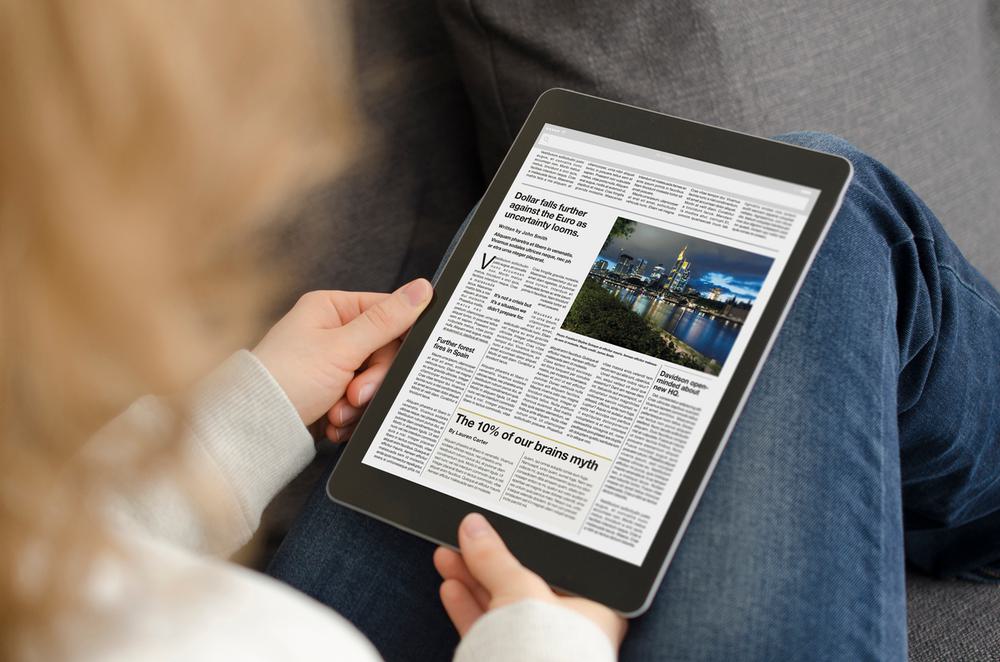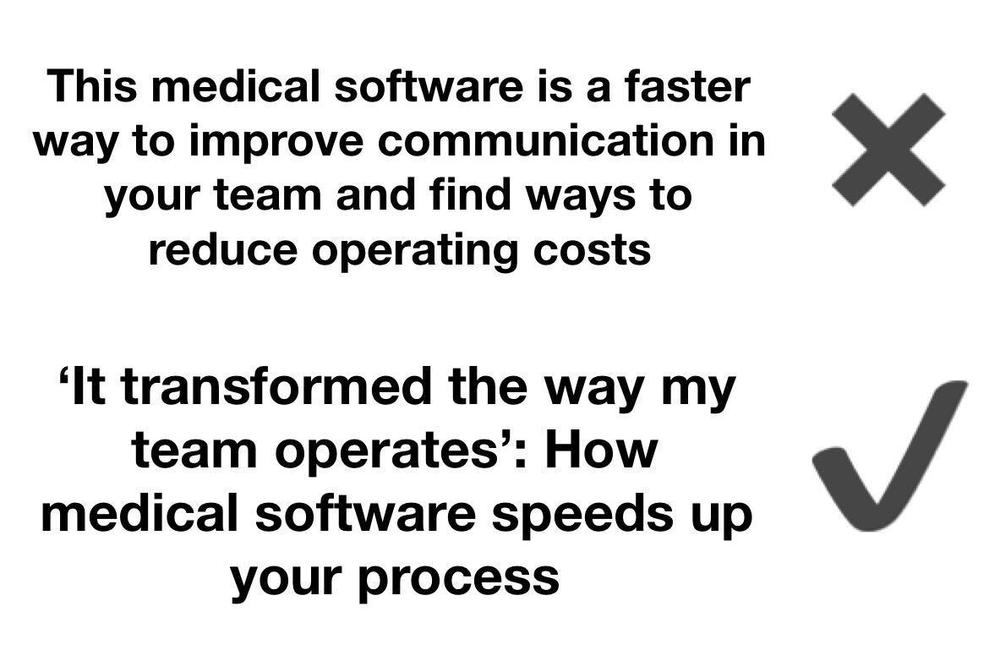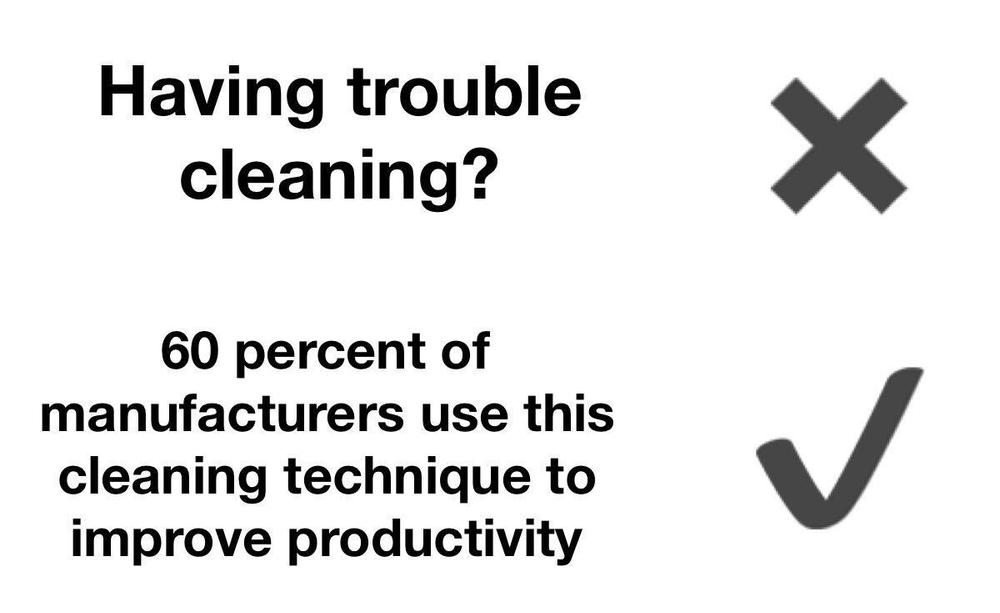Hey you! Grab your B2B reader's attention with a strong headline
Why is having a great headline so important? Two Motum B2B copywriters share their thoughts.

Ask any copywriter what they think about headlines, and they’ll all probably tell you the same thing: they’re surprisingly tough to write.
That’s because a great headline is much more than just a title for your content — it’s a first impression, and the point where someone will choose whether to read what you have to say or move on to something else.
We spoke with two Motum B2B copywriters to discuss the dos and don’ts of headline writing.
Why are headlines important?
A headline’s job is to get the user to read your content, but it’s important to do it in a way that’s clear and concise without making any false promises.
“A good headline grabs the reader's attention,” says Tanya Decarie, Copywriter at Motum B2B. “It's a one-line summary of why they should care. It sets the stage in as few words as possible for what your content contains, why it's relevant and what's in store if they click through.”
While having a catchy headline is certainly a bonus, it’s not the most important aspect of an effective headline.
“So many people focus on writing a really clever headline that sometimes it doesn't actually communicate what the piece is about,” says Rachel Cravit, Copywriter at Motum B2B. “You should communicate the benefit that readers will receive from reading your content.”

Research shows about 8 out of 10 people will read your headline, but only 2 out of 10 will go on to read the rest. Here’s how to bump up that number.
Let’s get technical
Writing a B2B headline is often more challenging than a B2C headline, because the highly technical or obscure topics can be difficult to summarize in one line. Knowing your audience is a key step to writing a headline that fits your content.
“The more you can know about your audience, the better, whether it's using keyword research to learn how they phrase questions in Google, getting on the phone with customers or conducting surveys,” says Cravit. “Anything you can do to learn more about who you're writing for will help you write headlines.”
Numbers, quotes and customer testimonials can also be effective in headlines, as long as you don’t go overboard.
“If you interviewed an expert or customer for the piece, they’ll sometimes give you a short, snappy gem of a quote that works well in a headline,” says Decarie. “Putting data in the headline can also be super effective – in B2B, this could be anything from a statistic to a cost-savings calculation.”

Another tactic is to write the headline almost as you would a CTA, phrasing it as an actionable task. It gives the reader agency in the process of reading — in other words, it frames the story as something they can do to reap a particular benefit.
Pitfalls to avoid
A great headline must consider the content that follows, especially in a B2B scenario. A headline that works for B2C content may not translate over to the more serious B2B world.
“A lot of people make the mistake of writing B2B headlines for the general public,” says Cravit. “You really need to think about who your target audience is, what they're looking for and what they would consider a benefit.”
It can be tempting to fluff-up your headline to make it sound more interesting or funny, but be warned: the reader will not take kindly to being misled.
“Writing a boring headline isn't actually the worst mistake you can make,” says Decarie. “The worst mistake is writing a headline that doesn't tell you what's in the story. It’s frustrating for the reader and breaks their trust.”
Word economy is another important headline consideration. The ability to convey ideas in a concise sentence is an important copywriting skill, and headline creation is no different.
“In general, less is more,” says Decarie. “A strong headline tends to be able to summarize all the things that we want in a few words. A bad headline is one that’s too long, or one that uses inaccurate language. Your words should be specific to the content.”

A clear and concise headline is crucial, but there are no strict rules on word or character count. These will vary depending on the subject and the real estate on the page itself.
“If you need to add more details, you can fit them into the sub-headlines instead of cramming them all into the headline,” says Decarie.
The last word
The methods above are proven ways to maximize a headline’s impact, but the best tactic for a given piece depends on the audience and the information available to you. There’s no easy way to accurately A/B test a blog or article, but you can measure a headline’s effectiveness in other ways.
“Google Analytics is a great way to compare headlines and see how your content's performing,” Cravit explains. “By looking at your best-performing content over time, you can identify what the common denominators are.”
At the end of the day, it's worth having the help of a trained copywriter who knows the ins and outs of writing headlines for maximum impact. That’s their job, after all.
Need some help with your headlines or searching for a talented copywriter? Contact us, and we’ll be happy to help.